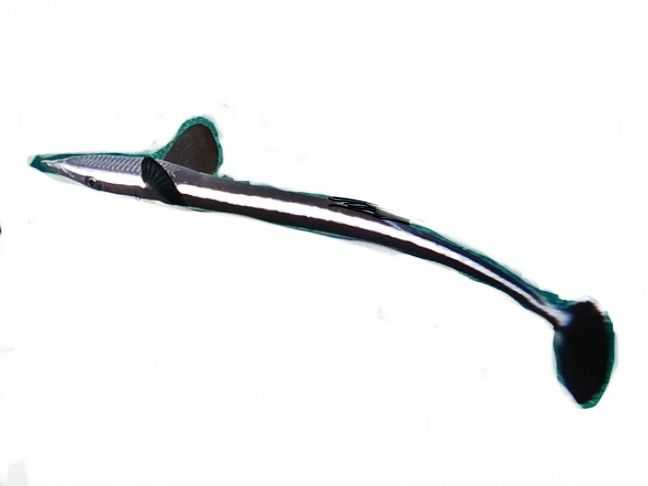Live Sharksucker

Species Details
Echeneis Naucrates
Echeneidae
Perciformes
Inshore, offshore
8 - 12 lbs.
35" - 43"
Live Sharksucker (Echeneis naucrates) Fish Description
The Live Sharksucker has many names such as the White-tailed remora, whitefin sharksucker, sucking fish, striped suckerfish, striped remora, and other different variations.
They have elongated and streamlined bodies and a protruding lower jaw well beyond the upper jaw. Their jaws, vomer, and tongue contain villiform teeth.
The most distinguishing characteristic that the Live sharksucker has in comparison to all the other fishes is the oval-shaped sucking disc, which is a highly adapted dorsal fin located at the top of their head up until the anterior part of their body.
Live sharksucker fish are dark grey to dark brown in color, with dark undersides. They have a lengthwise stripe, darker than the rest of their body with a whitish margin, running along the axis on their sides. And their caudal fin is primarily black with white corners.
Diet and Size
Live sharksucker fish diets vary as they grow older. They primarily feed on the leftovers or scrap from their hosts or parasites on their hosts. Juvenile live sharksuckers often act as cleaners found on reef stations, where they feed on small parasitic crustaceans living on other fishes’ bodies, such as isopods, ostracods, copepods.
A Live sharksucker with a host consumes the same parasitic crustaceans, but as well as food scraps from the feeding of its host, or small food they’ve managed to catch through filtering water through its villiform teeth while navigating on their host.
Host-less Live sharksucker fish would remain near the shore and aggregate with other species, and their diet would then primarily consist of free-living crustaceans, small fishes, and squid.
The average size of a Live sharksucker fish can grow in lengths up to 43 in.
Interesting Facts about Live Sharksucker
- Using its modified dorsal fin, which acts as a suction of sorts, the Live sharksucker fish can attach itself to various hosts, with the likes of sharks, rays, sea turtles, whales, dolphins, ships, and even sometimes scuba divers.
- Humans tend to utilize the Live sharksucker fish as a means to catch other fish, primarily their hosts. A fishing line would be fastened around the sharksucker, and when it attaches itself to a host, they are then both hauled and brought onto land or boat of the fisherman. This is exceptionally helpful in acquiring rather difficult to catch marine life.
- By their sucking discs, the Live sharksucker fish get a free ride through the waters. This is perfect for the situation of a sharksucker as it requires constant water flowing through their gills to survive. And despite Live sharksucker fish can swim on their own, this is just an easier way to living.
Live Sharksucker - Fishing Techniques
It will be quite difficult to fish for a Live sharksucker fish as they don’t travel in schools of fish.
If you’re eager to have your hands on this fish, you’ll have better chances of catching it while they are attached to their host fish, considering they don’t quite swim around as often.
Bearing in mind the difficulty of game fishing for the Live sharksucker fish, most anglers have decided they’re better left alone since they don’t produce much substance, flavor and have no general purpose for people.
Habitat and Distribution
Live sharksucker fish are considered circumtropical, as they are most commonly found in all tropical and warm temperate waters all over the globe, except for the eastern Pacific. They can often be found near the coast and offshore at a depth of up to 160 ft.






